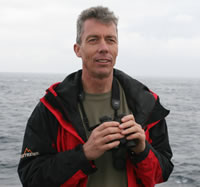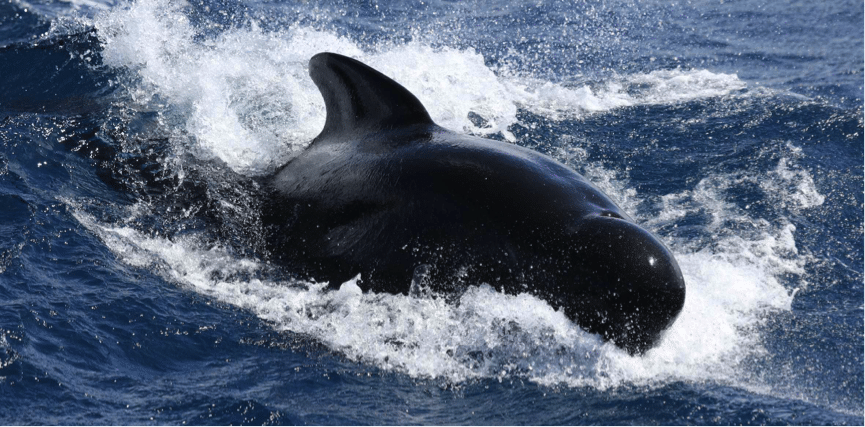 By Peter Ryan, onboard scientist, expert in general ornithology, seabird-fishery interactions, evolutionary ecology, marine debris, solid waste management, biology of oceanic islands.
By Peter Ryan, onboard scientist, expert in general ornithology, seabird-fishery interactions, evolutionary ecology, marine debris, solid waste management, biology of oceanic islands.
Leg 1, Day 8 – December, 2016.
After a somewhat delayed departure from Marion due to high winds, the shore party and Jess Berndt were returned to the ship early this morning and we steamed off the islands to conduct a series of oceanographic stations, including CTDs and bottom trawls. This gave plenty of time for observing the birds around the islands. Probably the pick of the birds were the many Grey-backed Storm Petrels, but the highlight for most people doubtless was the obliging pod of 30-40 Long-finned Pilot Whales that visited the ship at the first CTD station.
| Salvin’s Prion | 10000s | White-chinned Petrel | 15 |
| Macaroni Penguin | 10 | Grey-backed Storm Petrel | 10 |
| Black-bellied Storm Petrel | 10 | Wandering Albatross | 9 |
| Sthn Rockhopper Penguin | 8 | Soft-plumaged Petrel | 5 |
| Diving Petrel spp. | 5 | Grey-headed Albatross | 4 |
| Sooty Albatross | 3 | Light-mantled Albatross | 2 |
| Southern Giant Petrel | 2 | Northern Giant Petrel | 2 |
| King Penguin | 2 | Brown Skua | 2 |
| Light-mantled-Albatross | 1 | Indian Yellow-nosed Alby | 1 |
| Kerguelen Tern | + | Kelp Gull | + |
| Crozet Shag | + |
Only three hours of steaming transects were conducted due to the protracted time on station, but there were marked differences in the density of kelps upstream (0.1 km-1) and downstream (0.8 km-1) from the islands. The giant kelp Macrocystis greatly outnumbered Bull Kelp Durvillaea close to the islands (31:7), compared to more distant waters, where only Bull Kelp was observed.
